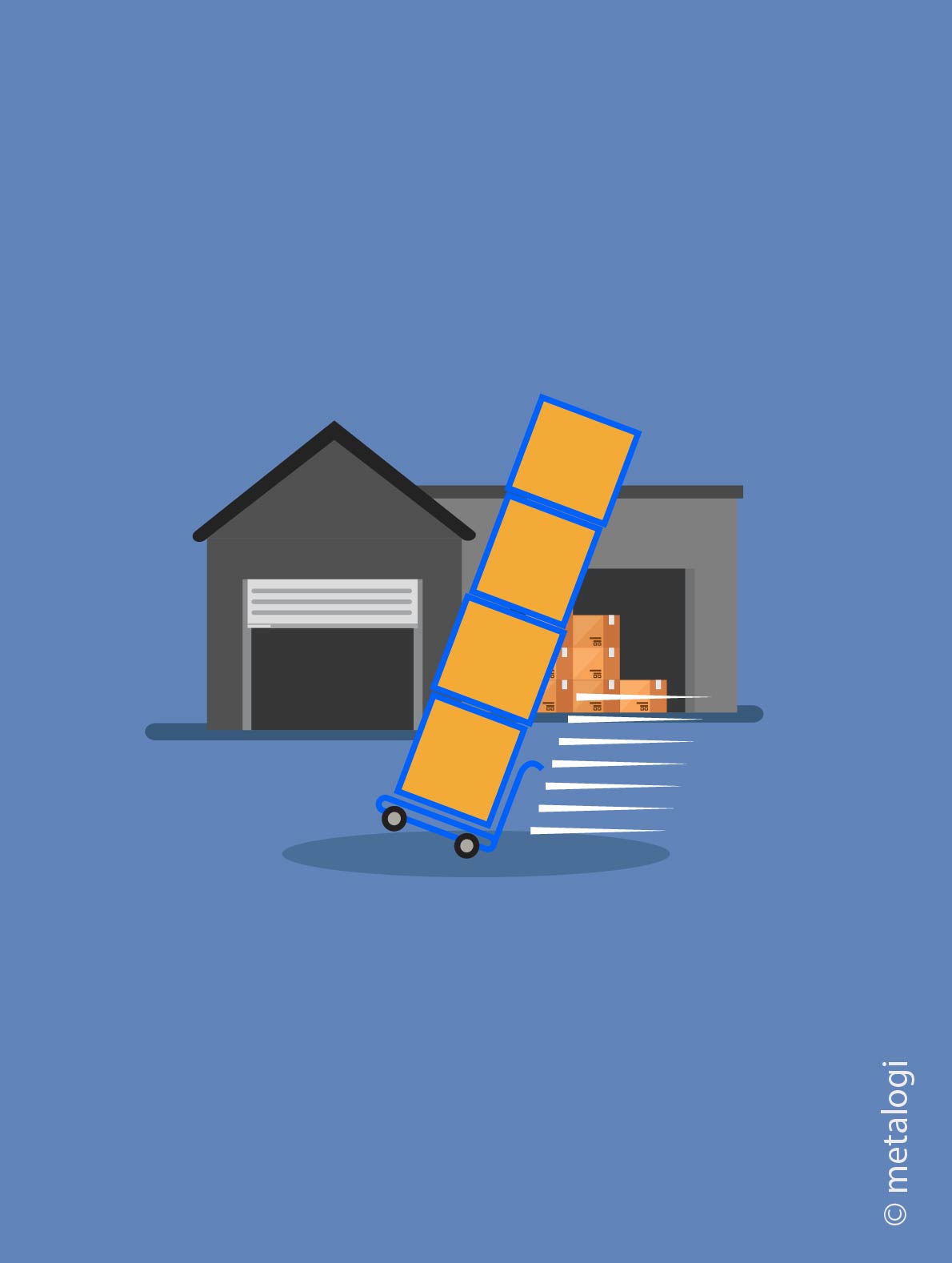Continued from Part 1
5 Plant Size makes a lot of difference
The task of differentiating between the sizes of different plants involves various factors like the number of workers employed, the geographical area occupied, the volume of the output, the investments made by the industry in upgrading its material handling equipment, etc. which can also be used to classify the industry.
When considering the size of a plant its geographical area also comes into consideration. Small industries are typically located in a constrained area where raw materials and labor supply are readily available. Big industries, on the other hand, are spread out over a large area, and they are spread out across the country. The size of the industry also indicates the intensity of the workforce. For example, small industrial plants are mostly labor-intensive since most of the work in the supply chain like moving materials from one end to the other, picking items, etc is done manually while in large-sized plants it is difficult for the workers to move large amounts of goods manually, therefore, conveyor belts, robotics, etc are used for sorting, assembling and transporting materials.
A collaborative case study was conducted in Spain by the University of Oviedo, Coruna, Santiago, and Vigo on the topic “Firm and industry effects on small, medium-sized and large firms’ performance“ examines whether or not the relative importance of the firm and industry effects in explaining performance variations is the same regardless of the firm size. It states that in relation to size, there has been particular neglect of studying medium-sized firms separately from SMEs in general. Therefore, this survey separately examined large, medium-sized, and small firms. They also contributed to knowledge on the firm-industry debate testing empirically both effects distinguishing the firms by size according to a standard classification in the EU. Industry effects are represented using industry concentration, product differentiation, and stage of the life cycle. Firm factors include assets and dynamic capabilities. These assets are related to marketing, production, technology, and finance. The results show that the performances of large and small firms are mainly explained by the firm effect, albeit for different reasons, while the performance of medium-sized firms is explained primarily by the industry effect. The firm factors exert a much stronger impact than industry, in both SMEs and large enterprises.
While there are significant differences in the performance of differently sized industries, the usage of innovative supply chain management strategies has increased in recent years as a result of the connection between them. For example, Smaller companies can profit from links between large sectors and high-growth organizations by ensuring supply chain links and lowering collaboration barriers. For example, Jaguar Land Rover and Boeing use large ‘anchor’ firms to draw research investment into their city economies to work with local firms to embed supply chain innovation benefits. In both cases, the large firms have provided significant upfront investment and improved research capabilities. In both cases, smaller firms have benefited from the specialized labor in the area and established supply chains that have been created.
6 Cost-Benefit Analysis of the handling solution:
The cost of warehousing and distribution is significant for nearly all goods purchased today. In many cases, it is by far the dominant cost of delivering goods/products to consumers. With rising labor expenses, rising equipment prices, and rising throughput demands, many suppliers are already looking for ways to increase the efficiency and dependability of their goods, lowering the cost of operation by lowering the equipment’s lifespan costs. The most popular method for cutting distribution costs is to minimize the cost or the number of operations at the warehouse. Many companies have made large investments in simple direct replacements of old technology that produce unexpected downtime in the factory. The use of obsolete equipment or in poor condition can create more loss than benefit.
The process of improving the cost of material handling begins in the design phase for the original warehouse. New upgrades will be impossible or at least difficult to incorporate into a warehouse unless the original design is sufficiently adaptable. Major equipment like conveyor systems, dock doors, etc are not flexible therefore while installing them a key consideration should be in choosing how much equipment will be needed to be purchased and what manpower requirements will be required. A crucial data point in estimating the cost of operations includes the skill level of the employees hired, the incentive to raise their skill levels, and the maximum functional capacity.
A study was conducted in Mu’tah University on ‘’Cost-benefit analysis of increased reach truck performance on materials handling warehouses ‘’ to determine whether increasing velocity and acceleration performance for reach trucks in materials handling warehouses can help to reduce overall cost in terms of cost per pallet handling. The main criterion in determining this is the decreased work time and increased energy consumption. To address this, a simulation model based on a Maines Paper & Food Services, Inc. warehouse facility in Conklin, NY was developed. This baseline model was compared to two other scenarios. In the first scenario, velocities and accelerations are increased by 15% while, in the second, they are increased by 25%. It is assumed that energy consumption increases in these alternative scenarios by 30% and 50% respectively. The results suggest that human operators were able to take full advantage of the truck performance enhancement although the savings in cost in alternate scenarios are modest. It also suggests that in larger warehouses where trucks have to travel more distances at maximum speed the performance enhancements may have more impact.
7 Testing the Solution:
It has become increasingly beneficial for logistics professionals to evaluate various key factors of a product before implementing them in their network and also look into their effectiveness with the help of previously conducted research. In order to overcome various flaws in supply chain operations, industries have started to implement the latest supply chain technology and find mutually beneficial opportunities with one another as part of connected logistics networks. The usability of a product, ease of incorporating it into one’s network, and carrier chains should be considered while adopting a new solution.
An ideal example of this is the Automated Container Truck loading by SmartTeh. They offer an automatic system that allows to load and unload containers in a matter of minutes, compared to longer, traditional processes of truck loading and unloading. The system consists of a loading plate, capable of sliding within the space of the containers and allowing in just one entry or exit, the loading or unloading of all the merchandise inside the container. It has the capacity to support up to 4000 loads and is driven by an electric or hydraulic motor with clamps to keep the structure fixed at the moment of the loading operation. This loading solution helps to reduce the risk of product damage, by organizing the merchandise on the loading platform all excess movement of goods as well as reordering inside the container is avoided. It also increases the productivity of labor by reducing unnecessary and tiring excesses of movement. It reduces the truck loading and unloading time by allowing an increase in the number of shipments or receptions of trucks per time unit, in addition to contributing to the reduction of delivery time and an increase in the service level. The cargo space is fully utilized, avoiding any intermediate or dispersed item storage around the loading port. Automated loading equipment is popular in the wood processing companies and has been adopted by companies like Metalogalva, Egger, etc
A case study by Metalogi(Group Arvind) would be worth mentioning on one of its unique products named Metcase that successfully delivered customer metrics. Metcase is a full-storage metallic open box that has support on all of its sides to prevent objects from falling off while in-transit stock. It avoids damages to items in the box due to a piled-up load of top boxes on boxes that are under them. The case study shows that this packing solution saves 70% of freight cost on each product, negligible product rejections, eliminates manpower, increases the number of SKU boxes on each pallet position on the rack. Hence saving rack space and floor space by racking more units in each Metcase. When compared to wooden packing during the study it was seen that it could hold 9072 product packages, while wooden packaging could previously hold only 5292 boxes. Conducting a case study on this product helped in analyzing its productivity and also helped in understanding its potential in the supply chain and logistics handling industry.
While testing previously implemented solutions, industries are essentially creating a miniature version of a production-scale operation in order to replicate the environment of the process on a smaller scale. The test will help ensure to get the end results that are wanted. Testing a solution is important for several reasons, the largest being the success of the project. Tests can narrow down specific bottlenecks or preliminary problems early on. Pinpointing potential problem areas in the initial phase, it allows the engineers and architects to make necessary adjustments promptly before implementing the solution at scale.
These are a few ways through which industries can adopt effortless manufacturing logistics in their warehouses thereby creating an impact in different business areas.
Metalogi is one of the leading Indian brands in logistic performance packaging. It provides professional packaging solutions to industries for various use cases namely exports, warehousing, and material handling. To know how to get logistic performance packaging to your organization, visit www.metalogi.in or connect with us at info@metalogi.in

